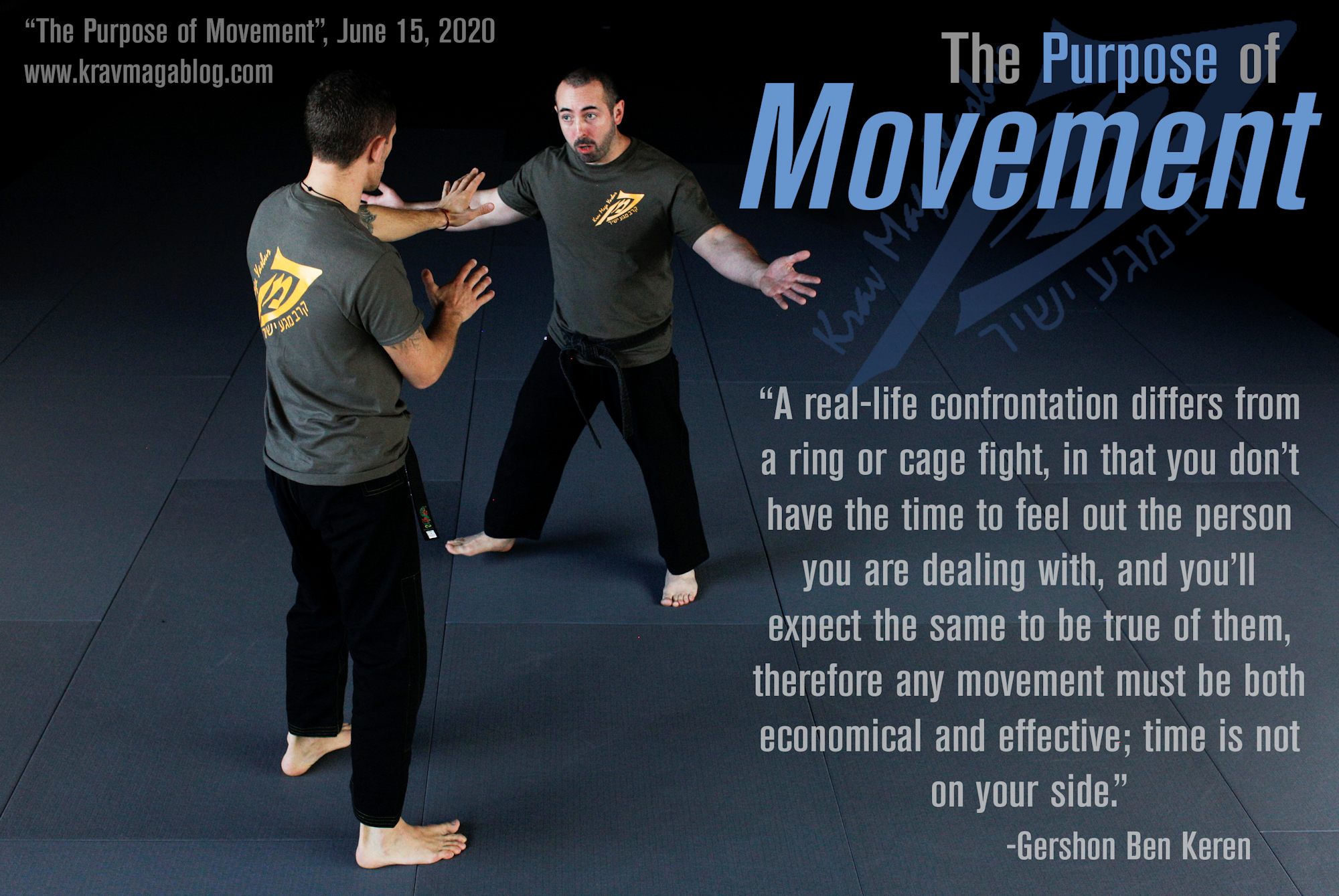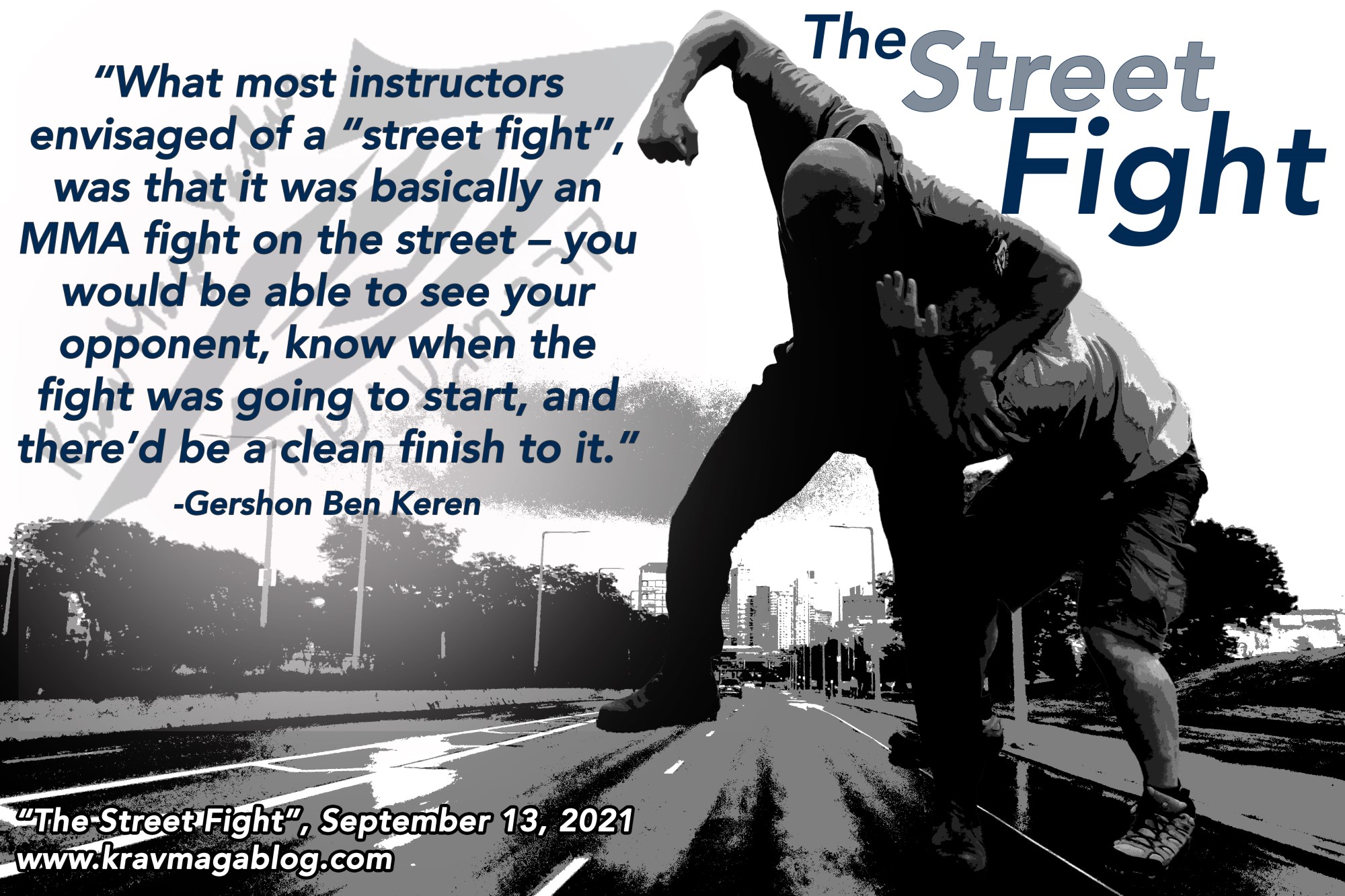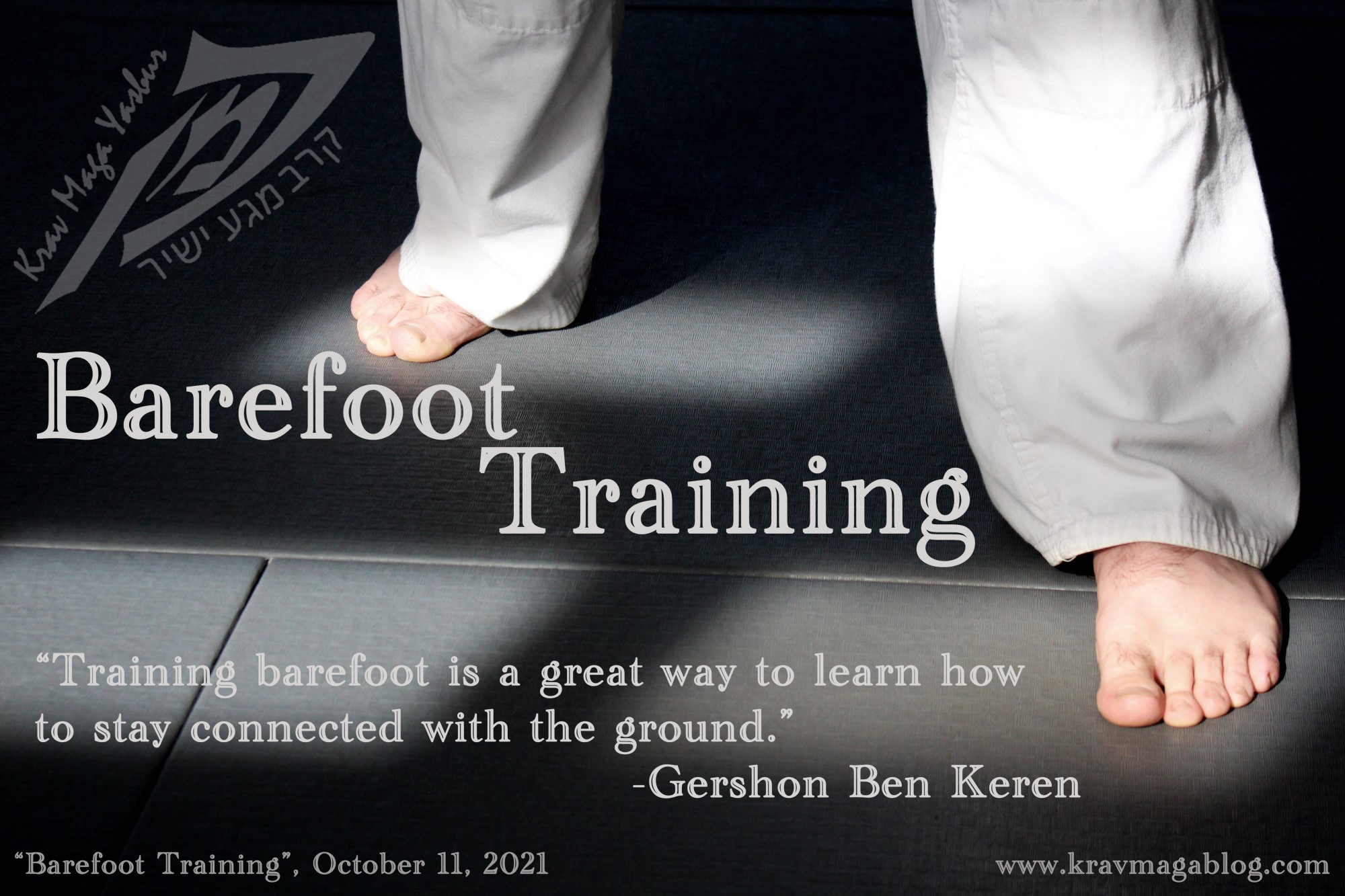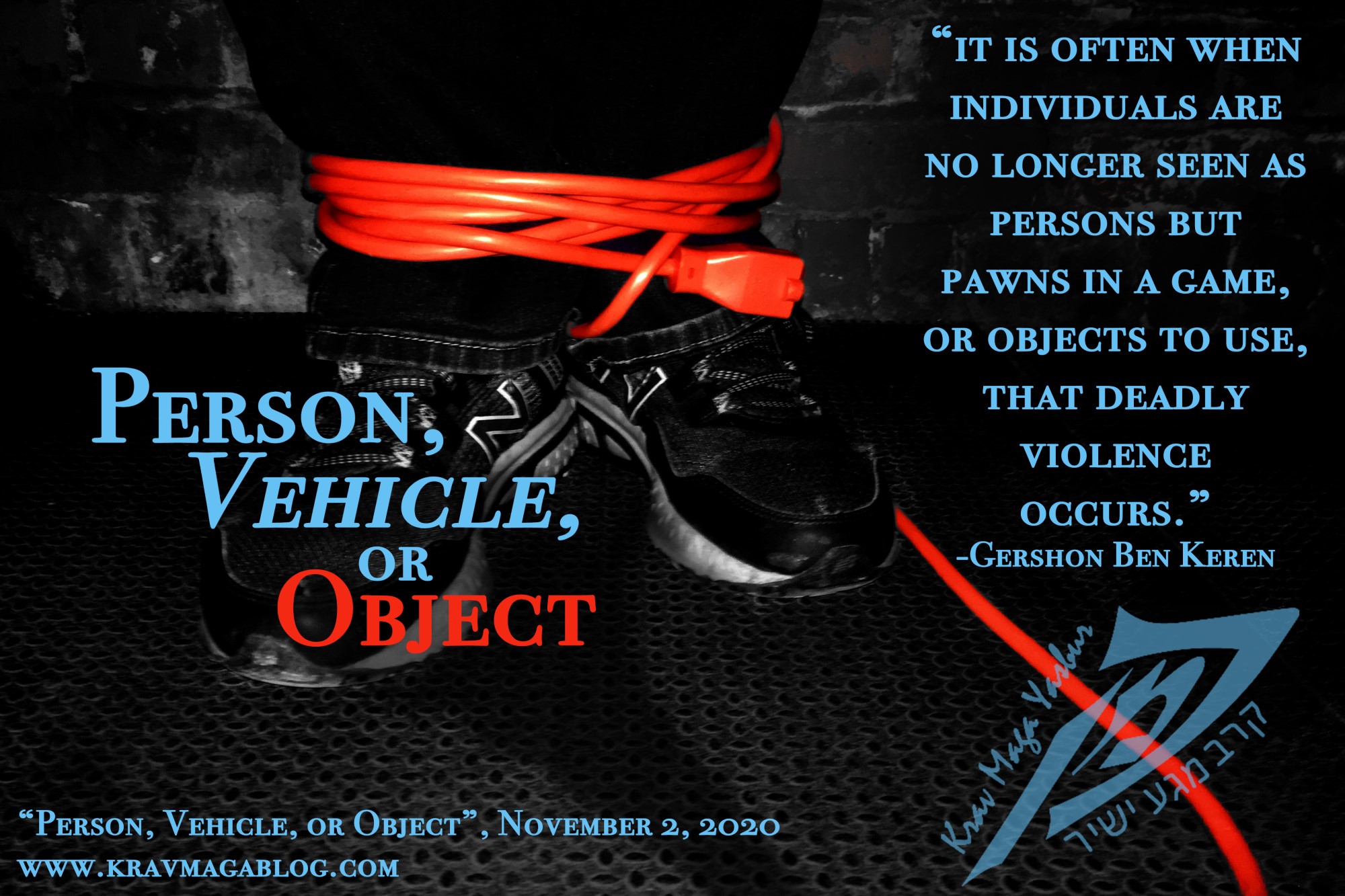Person, Vehicle & Object, is an article written by Gershon Ben Keren, a 5th Degree Black Belt in Krav Maga, who teaches Krav Maga in Boston, MA. He has also authored three Amazon best-Selling Books on Krav Maga.
How you are seen by others, and the role(s), you play in their life can influence and affect your survival. Hopefully, most people who we interact with us see us as individuals – as persons – however there are those who may view us as vehicles to achieve self-satisfying goals, or expendable objects, that can be used to satisfy certain urges. This idea of victims, as persons, vehicles or objects was first put forward by Canter and Ioannou (1994) in their study of stalking victims, however the model was later extended to include serial rape and murder. However, it can also be used in a practical sense, to help redirect a predator’s intent, in order to ensure or increase an individual’s survival chances. Before looking at the way the model can be used practically, it is worth understanding the context and the methodology that led to its development.
Canter and Ioannou, recognized that one of the inherent difficulties in trying to classify stalkers into different typologies, was that most are reluctant to participate in the necessary interviews that would help explain why they acted and behaved in a certain way. So instead, they looked at the different observable actions that a variety of stalkers engaged in, such as how they interacted and communicated with their victims etc. Rather than try and work out what the motivation behind these actions were, such as what the stalker was hoping to achieve, and whether their behaviors were delusional, obsessional or not, Canter and Ioannou, simply measured what they did, such as sending emails, text messages and gifts etc. and how these things related to other actions and behaviors, such as physical threats, vandalism and destruction of property, along with other offenses etc. These actions were then mapped and categorized into themes, regarding how the offender appeared to view their victim e.g. an offender/stalker who tried to coerce a victim’s friends into providing them with personal information about their target, viewed them as a “person”, whereas an individual who sends the victims “symbolic” gifts is using them as a vehicle to manage their own sexual desires, frustrations and anger etc. The stalker who tries to control their victim by intimidation – such as waiting or driving past their home – is viewing them as an object/possession that belongs to them etc. The propensity for the use of violence against the victim/target increases significantly when the stalker starts to treat them as an object.
Though it wasn’t the purpose of this study, a stalking victim could start out being viewed as a person, such as an ex-partner who the stalker is trying to get back with. However, as the gifts and constant communication fail to yield the results to this end, their view of the victim changes, and they now see them as a vehicle for satisfying some sexual need; and so they start sending pornographic material/content to their victim. Later on, as they become more frustrated and angrier at the way in which their victim is behaving and responding, their attitude towards them changes, and they now view them as an object that needs to be controlled and punished etc. It’s not inevitable that all stalkers follow this path, many will give up after a period of time, however it is worth noting that a stalker’s relationship with their victim can change, as they no longer see them as a person but come to see them as an object. With each shift in perspective, the likelihood for violence increases.
You may have been in a situation, that during or afterwards, you realized that you may have been dealing with a dangerous individual who harbored harmful intent towards you, but ultimately nothing happened. This could be down to something you did, or some change that took place in your environment, that you were either aware/unaware of, such as another person taking an interest in what was going on etc. However, the change could also have been down to the individual’s urges and desires e.g. they lost interest in acting violently/harming you. This could be for a number of reasons, including the moment where everything came together for them, emotionally, psychologically, and physically, passing. However, the moment may also have passed because of something that you said or did, which changed your potential aggressor’s attitude towards you. This may have been done deliberately or inadvertently however it was probably something that changed you from being seen as an object or a vehicle to that of a person. Not even necessarily a person with whom they could empathize, but somebody who no longer met their initial specifications as a victim. In sexually-based assaults, an assailant needs to cultivate and manage their fantasies, urges and emotions. If a potential target/victim manages to interrupt this process by presenting a different view of themselves or no longer appearing as the “perfect victim”, it may be that the aggressor is no longer motivated to carry out the assault. Knowing that an individual engaged in a stalking campaign is more likely to behave violently towards a victim they see as an object than one they see as a person, this idea/concept of presenting yourself as a person to a would-be aggressor/attacker can be used as an active survival strategy, in other sexually and violently motivated offenses.
This idea of humanizing yourself, and presenting yourself as something more than an object or a vehicle has been shown to be a successful strategy in hostage/crisis scenarios, along with abductions, kidnappings, and home invasions etc. In fact, it is often when individuals are no longer seen as persons but pawns in a game, or objects to use, that deadly violence occurs. Understanding how we are seen/viewed by those who mean us harm, and how changes in this can signal a change in intent, can help us reposition ourselves to be viewed as individuals, rather than as vehicles or objects.
0 COMMENTS















